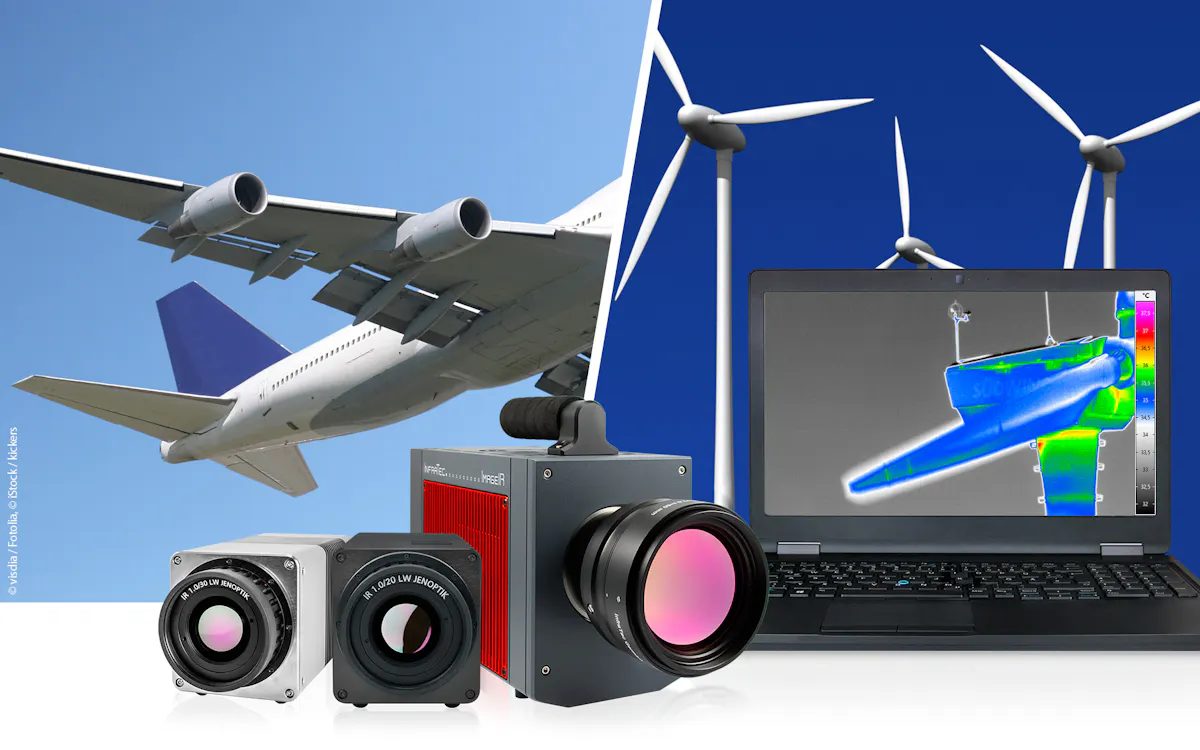
Flow Analysis Using Thermal Imaging (January 2024)
Thermography enables the analysis of flows by visualising characteristically thermal signatures, which are caused by different heat transfer coefficients. Thus, direction and strength but especially the type of flow – turbulent or laminar – can be determined. Therefore, thermography as a non-contact, area-based and imaging temperature measurement method is perfectly suited to detect even the smallest flow-induced temperature gradients of less than 15 mK without influencing the flow behaviour itself.
So, thermography consequently is a good choice to be applied within the field of aerodynamic optimisation, for example in reducing flow resistance on aircraft wings or rotor blades of wind power turbines. Besides this, thermography is also an excellent testing and measuring method in other areas of flow analysis. With its help, disturbing geometric influences on the flow-related heat exchange in convection-based cooling systems can be detected and subsequently eliminated. In the context of environmental and geological studies, the thermographic method enables, among other things, the large-scale analysis of natural or urban microclimates and thus allows conclusions to be drawn about local conditions.
In InfraTec's online event "Flow Analysis Using Thermal Imaging" we will inform you about possible applications of thermography in the context of flow analysis.
Online Event: “Flow Analysis Using Thermal Imaging”
Date: Wednesday, 21 February 2024
Time: 10:00 AM – 12:00 PM (CET)
Registration: expired